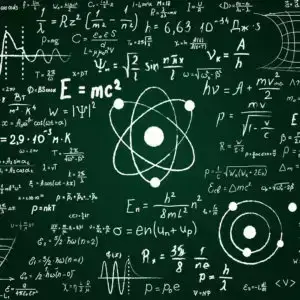Their findings, published in the Journal of Holography Applications in Physics, go beyond simply suggesting that we’re not living in a simulated world like The Matrix. They prove something far more profound: the universe is built on a type of understanding that exists beyond the reach of any algorithm.



Disclaimer: not a physicist, but I am familiar with mathematical logic side of things e.g. incomplete theorem and stuff.
I have to say, terrible paper. Very light on technical details, full of assertions not backed up by arguments. I wouldn’t really take this too seriously. But this is just a letter, maybe the full paper, if they ever publish one, will have more substance? We will see.
Yeah, the opening of the second paragraph on the page marked twelve basically says “we don’t have a true theory so we look at some proposals.” If anything, all it’s shown is that these specific proposals fall prey to the normal inability of mathematical systems to fully describe themselves, not that quantum gravity actively disproves a simulation. Everything after that might be sound if we trace all the sources. Nothing stood out as implausible or anything beyond some logical leaping. There was nothing that showed adding more to the system won’t fix the issues, which is the whole point of things like the updates their choice of set theory added to ZFC.
Stupid rebuttals for stupid ideas tbh. Simulation hypothesis should never have been taken seriously
It could be a good sci-fi idea though. (Wachowskis et al. 1999)
I doubt the idea this can be proven at all. It makes the assumption that a simulation would have to function in a particular way. Why would that have to be the case? Anything you find could just be a quirk of the simulation. Hell, the simulation could be made in a universe with entirely different rules and logic, so you can’t make assumptions about anything. It’s really not something that I think could be disproven or proven.
(Because it can’t be disproven or proven, and it doesn’t change anything either way, you should live as if it isn’t real probably. It’s a fun thought experiment, but you probably shouldn’t hold an active belief in it, because it seems like something that could mess with your mental health.)
Yeah, it seems all talk and no real substance.
I am also not a physicist nor a logician, just interested in the subject matter.
Can you provide some examples from the paper of assertions that aren’t being backed up by arguments so I might try and look further into it? Thanks!
The central assertion of this paper:
I’d argue is only partly justified. An argument for “Effective axiomatizability” is given, “Arithmetic expressiveness” is more or less self-evident, but the other two I’d say is given without justification.
Also the core concept of F_QG is defined in a very hand-wavy way. I’d like to see a concrete example of an existing theory formalized in the way they proposed in the paper. It’s unclear to me how mathematical derivability from the formal system correspond to how laws of physics apply. Specifically mathematical logic is a discrete process, yet the world described by physics is generally contiguous. (Yes, there are ways for this to make sense, but they didn’t provide anything for me to know how they intended for this to make sense.)
This statement is simply defining the fundamental structure of how a full theory of everything would be composed. A consistent and complete theory must meet all four criteria.
The above four criteria are how F_QG is defined. The author, in presenting these four criteria, provides two very specific, concrete examples of theories (String Theory and Loop Quantum Gravity) while introducing the premise of his argument. He clearly affirms that these theories do meet three of these four criteria but fail on the fourth. If there were an example of a theory that meets all four criteria than that theory would be the theory of everything and the whole issue would be resolved.
The rest of the paper explains exactly this. Mainly that the only way to satisfy all four criteria is to include non-algorithmic components that bridge the discreteness of math with the observable continuity of physics. The author goes on to describe several examples where this process can apply in modern physics theory.
I do agree that the author is making a dramatic and bold statement regarding a proof of a theory of everything (that being that the theory of everything can never be computational) which requires heavy scrutiny. However, I am in no way an expert in these fields and so I have accept that the journal that published the proof can provide that scrutiny. It is easy to check on the reliability of that journal as a lay person, and in doing so doesn’t seem to raise any flags about the validity of the arguments the author is presenting.
I should’ve known you weren’t genuinely asking a question… You were just baiting me.
You are doing what the authors are doing, this itself is an assertion you aren’t backing up.
No, these are four criteria the authors assertion F_QG must satisfy. For theories that don’t satisfy all four criteria, you should still be able to at least formalize them into F_QG as proposed by the authors. Yet they didn’t give a concrete example of how a theory may be so formalized.
Uh, what, not? “The rest of the paper” is after they have already reached the point of claiming the Universe can’t be simulated. My objection is way before that, which is pointing out how poorly F_QG is defined.
Sure, but knowing what I know I can give this paper a bit more scrutiny than a lay person can (ha ha, look at me, I am very smart /s), and this paper doesn’t convince me in the slightest.
I genuinely was not intending to ‘bait’ you. You presented an argument saying your knowledge of the subject is more robust than the experts who refereed the paper. Since I am not an expert in the subject and am curious about learning more, I was asking you to guide me in that process with your experience.
I felt that your arguments suggesting that the author is presenting an inconsistent logical proof were not well defended and so I asked for clarification on the points you raised. I am still unclear what you are saying in this statement:
These are the four criteria that establish how a computational theory is logically defined as a formal system, not an argument. The author makes this clear in addressing the notation being used:
After that paragraph the author uses several very specific examples in modern physics theory describing how the findings apply starting with the paragraph:
Again, I am trying to approach the authors bold claims with skepticism and scrutiny, not argue with you. But you have to be a little more humble, the paper wasn’t published in order to convince you. Just because you weren’t convinced doesn’t mean that the proof is invalid.
Actually, F_QG is itself an assumption which isn’t backed up. See the paragraph before the one you quote when defining it. The beauty of axioms is that we can assume whatever we want but we need to either show nothing goes underneath it (eg Peano axioms) or have a very compelling case to make them (eg non-Euclidean geometry like parallel lines meet at infinity). This is a metasumary of some similar research at best. It’s not a proof in the way you think it is. Just because you don’t understand what you’re responding to doesn’t mean you’re right.
Thanks for responding! I never meant to claim that I am right. The whole purpose I am engaged in here is that I do not understand the proof at all and am trying to understand it better.
Here is where F_QG is introduced in the proof:
Is this not just saying that it is the existing theories (string theory, LQG, etc.) that are assuming gravity takes the form of a formal computational system? And so, F_QG as it is defined above is how any formal computational system is logically constructed, as in it has to have those three components in order to logically be a formal computational system?
I am not a logician and do not understand what a first-order language is, or closed sentences or all those logic terms in the definition of notation. However, is F_QG in this case not just logically how any theory would need to be constructed in order to logically be a formal computational system? Is there an assumption being made here with regard to those three components in how formal systems are logically constructed?
You’re missing the initial step.
Both OP commenter and myself take umbrage with #1 (if I can speak for them; they make disagree with me). I assume that if we trace the sources for the letter that we’ll see the reasons we’re able to make all of these logical leaps using other results in the field that come out of these proposals. I also assume that, if one of these systems is the foundation for a fully consistent theory of quantum gravity, then its conclusions are valid. This paper doesn’t address that initial assumption though so things like the article summarizing it are begging the question.
There are many situations where we just have to agree to assume. If you read 14 and 36, you’ll find some of the core assumptions that go into this letter (both interesting ideas and the same authors so you can understand why they’d continue). An assumption Faisal makes is the rejection of objective observability which is one of those things you either believe or don’t believe. It’s analogous to the axiom of choice in that it could be contested but could be generally accepted.
Is it, really? How does one check if a journal is one of those rigorous ones, without being an expert in the field? Some journals change from legit to predatory.
https://en.wikipedia.org/wiki/Journal_ranking
It isn’t a perfect system, but it is a place to start.
There are some journals which are high in the ranking and are suspicious, also even good journals accept faulty papers time to time.
Also, https://www.scimagojr.com/journalsearch.php?q=21101250473&tip=sid doesn’t seem that great of a journal.